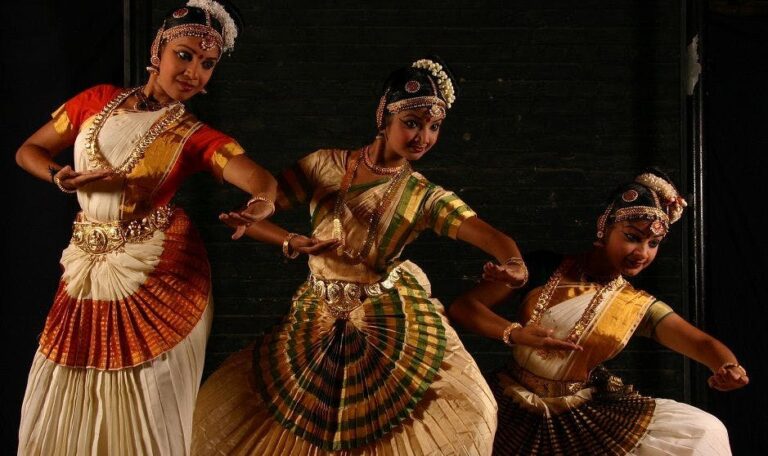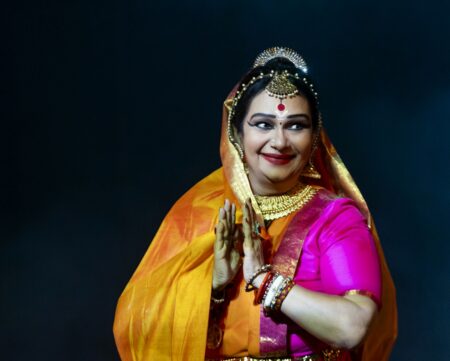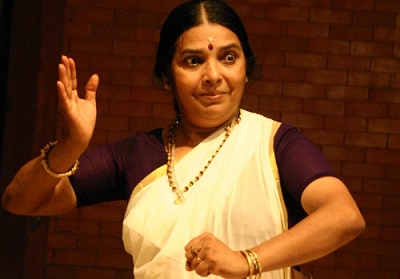
From the Sangham era, the art of dancing had progressed gradually and flourished considerably during the Chera period because of the courtesy, patronage, and benevolence of the rulers.
The protagonist in the ancient Tamil work of Manimekhalai is the daughter of Madhavi of Silapathikaram. This way, the work Maṇimēkhalai is a continuation of the story of Silappatikāraṁ. It was written by the poet Madhurakulavanikan Chathanar.
The danseuse Madhavi gives birth to the daughter of Kovalan, the hero of Silapathikaram. On hearing the news of the death of Kovalan, Madhavi is overcome with sorrow and remorse. She gives away all her wealth and becomes an ascetic – a Sanyāsini. Manimekhalai her daughter also gives up her worldly life and turns to the spiritual path. The Silappatikāraṁ describes how Kovalan’s life is completely ruined as a result of his infatuation with the courtesan, Madhavi. But in Maṇimēkhalai, the poet takes a twist, in the opposite direction. There we find two courtesans, Madhavi and Manimekhalai (mother and daughter) giving up their worldly life of pleasure and entering a spiritual life.
In Maṇimēkhalai (Kacimānakar pūkka kātai), Manimekalai who chooses ascetic life goes to Vanchi (Thiruvanchikulam, Kodungallur) city to learn religious truths from learned men. It is said, she went around the city. One of the sights that Manimekhalai saw was the streets, where the exponents of the dances, Vēttiyal Kūttụ (a dance performed specially for the king) and Potuviyal Kūttụ (a dance performed for the public in general) lived.
In these two works, Silappatikāraṁ and Maṇimēkhalai, the chief characters are danseuses. From this, we can understand the high place that the art of dance was given in those days in Tamiḻakaṁ. We also find that special platforms were erected at different places of the country for dance performances. If we scrutinize carefully the references to the art of dancing in Silappatikāraṁ we can understand that a scientific basis had already been laid for the art.
In Silappatikāraṁ, we come across a passage throwing light on the elaborate training that Madhavi had in the art of dancing. She started learning music and dance when she was only seven years old. Her study and practice of these arts continued, with unbroken regularity and punctuality for five years. Her Arangettam(maiden performance before the public) was conducted with elaborate preparations and arrangements. Madhavi’s teacher is described as an accomplished exponent who possessed scientific knowledge of all forms of dances rampant at that time.
The various passages on art that occur in Silappatikāraṁ and Maṇimēkhalai, read together will give us a comprehensive view of almost all the performing arts that were prevalent in Tamiḻakaṁ then. However, from the generalized remarks in the two works, it is difficult for us to obtain details about each art, as to where and how it flourished, etc. But when we compare the passages on art in Saṁghaṁ works with the passages in these two later works, Silappatikāraṁ and Maṇimēkhalai, the fact remains that the art of dancing had progressed and prospered much during the interval between the Saṁghaṁ works and the two later poems.
Kudam Kuttu, Kudai Kuttu and Pedu
Detailed description of Arangetram in the ArangetruKathai and the hand gestures used by Madhavi tells us that the dance form described was already highly evolved by those times. Another episode on Indrotsavam also gives detailed description of the musical and dance performances as part of the rituals conducted for the Ganadevata. Eleven types of dance that Madhavi performed during the festival of love also reveal a lot of commonalities with different folk and classical dance forms of Kerala and Tamin Nadu regions of South India.
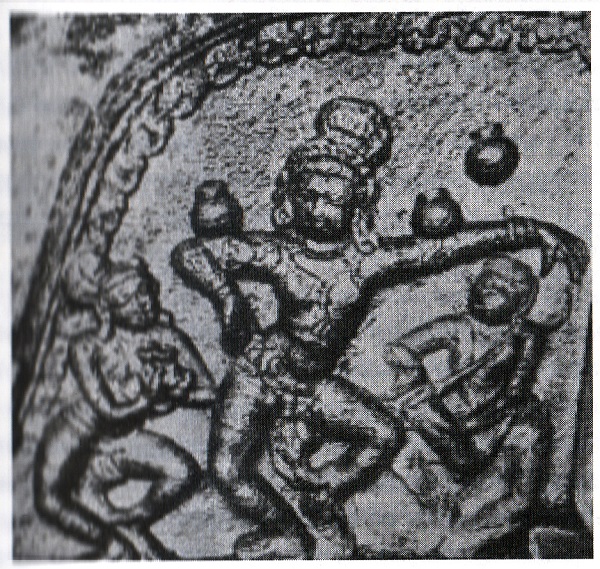
For example, Kudam Kuttu, Kudai Kuttu and Pedu are discussed among the 11 dance forms that Madhavi performed. The Kutam Kuttu is supposedly a dance performed by Lord Vishnu named as ‘Mayamayan’ who went to the city of Banasura to save Anirudhan. Some others opine that Lord Vishnu performed this Kuttu to save goddess Lakshmi. The dance perhaps got its name as the performers dance with pots in the hands. Unlike other regions of South India, evidence of ancient times is not preserved in stone carved sculptures in Kerala. This is because wood carvings were more common in temples of Kerala region and they decompose over 100s of years and are not preserved without change unlike carvings on granite and other stones. However, an example of a sculpture depicting the Kutam Kuttu shown above was found in the Ettumanoor temple of Kerala.
Another dance mentioned among the eleven, called Pedu, is also very special. In this Kamadeva, the lord of Love, is described as dancing dressed up as a woman. Kamadeva performed this dance in the city of ‘Cho’ after rescuing his son Anirudha. Male dancers performing in female costumes were not considered taboo during those times. It is noteworthy that Herman Gundert’s Malayalam dictionary gives the meaning of Mohiniyattam as ‘dancing and acting dressed up as a woman’.
Kutaikoothu
Anyway by this time similar sculptures could be seen in several temples. Kudaikoothu, which is mentioned in the Silappathikaram as performed by Subrahmanya to defeat the asura-s can be seen in the Thrikkodithanam temple.
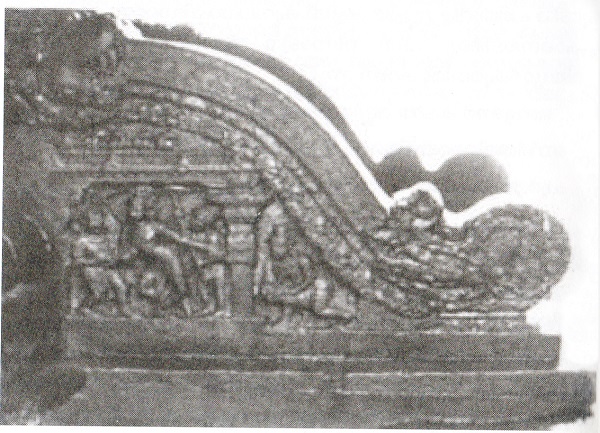
Dejected because of their defeat at the hands of Subramanya the Asuras sit down unhappily and Subramanya in a mood of jubilation performs. This dance in front of them holding his umbrella in a slightly standing position. This dance is known as KutaiKoothu.
For several years after the Saṁghaṁ period, the history of Kerala remained very vague and obscure. Historians reflect that by about 800 A.D the second Chera Kingdom was established, the capital of this Chera Empire being Mahodayapuram (Thiruvanchikulam). The Chera kings who ruled their kingdom from Mahodayapuram were all very genuinely interested in promoting the welfare of their subjects. It was a period of cultural progress and advancement because people had imbibed the values and traditions and good elements of the Drāvidian culture.
Art made considerable headway during this period because of the courtesy, patronage and benevolence rendered by the rulers. It was in this period, that strong and durable temples, began to be built in stone and wood, and most of these temples sheltered training centres, especially for art (culture). From all this, it is quite clear that the kings of the second Chera empire played a very significant role in promoting the growth of literature and art.
Read Part 5
(Assisted by Sreekanth Janardanan)

